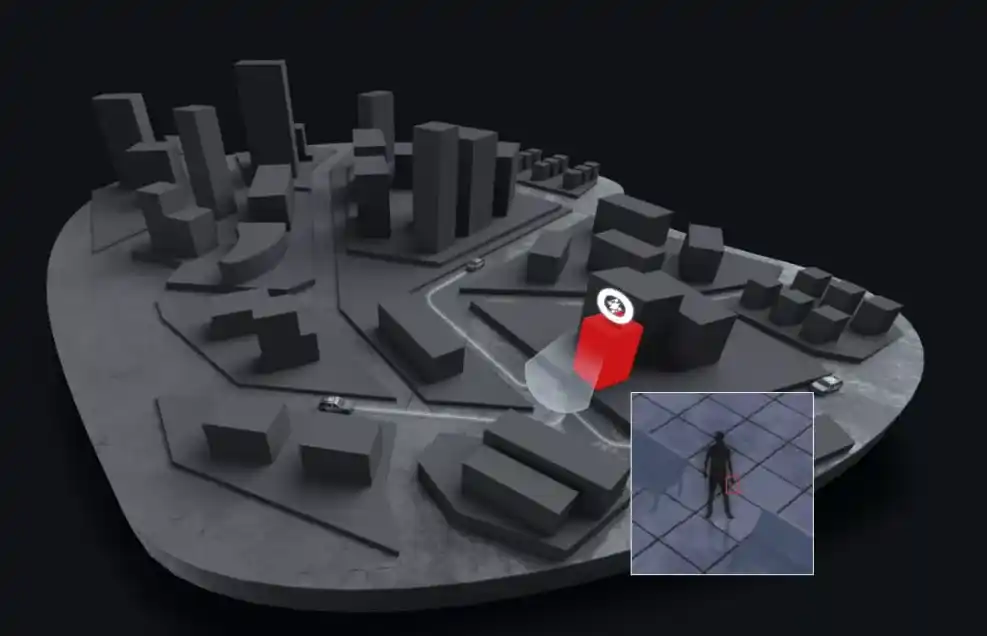Table of Contents
School safety remains a top concern in the United States, particularly following high-profile shootings like the Virginia Tech massacre (32 fatalities, December 2023) and the Sandy Hook Elementary School shooting (27 fatalities, second deadliest). In an effort to bolster security and prevent future tragedies, some states are exploring innovative solutions. Kansas is at the forefront, testing the use of AI gun detection cameras for firearm detection.
ZeroEyes: Training AI To Spot Guns In Schools
This proposal in Kansas centers around ZeroEyes, a technology company founded by military veterans. Their system leverages artificial intelligence (AI) to analyze live video feeds from existing security cameras within schools. The AI is specifically trained to detect firearms, triggering alerts for human verification by former law enforcement and military personnel stationed at ZeroEyes’ Operations Center (ZOC). These trained professionals then verify the potential threat identified by the AI gun detection cameras before dispatching authorities, ideally within a swift 3-5 second window.
How Does AI Gun Detection Camera Technology Work?

ZeroEyes’ AI gun detection camera system operates in three key phases:
- Detection: ZeroEyes leverages existing security cameras throughout the school to continuously monitor live video feeds. The AI software meticulously scans each frame, searching for any signs of firearms.
- Verification: If the AI detects a potential weapon, an alert is instantly sent to a trained technician at the ZeroEyes Operations Center (ZOC). This technician has access to the specific camera feed and can quickly review the image to confirm the presence of a firearm.
- Response: Once a technician verifies a firearm through the AI gun detection camera system, ZeroEyes immediately springs into action. School administrators and law enforcement are notified within seconds, receiving details on the number of suspected shooters and their location. This critical information allows for a swift and coordinated response to the potential threat.
Can AI Gun Detection Cameras Help?
School shootings are happening more often. According to CNN, school shootings in the United States have increased significantly, reaching the highest numbers since 2008 2021, 2022, and 2023. 2022 was particularly deadly with 46 fatalities, and there were at least 82 incidents reported in 2023 alone.
Lawmakers in Kansas are proposing to offer up to $5 million in grants to equip schools with these AI gun detection camera systems. However, this initiative faces a few hurdles. Governor Laura Kelly’s approval is still pending, and schools vying for the grant money will need to meet specific criteria. These criteria include:
- Utilizing patented technology (likely referring to ZeroEyes’ specific AI solution)
- Achieving the designation of “qualified anti-terrorism technology”
- Adhering to established security industry standards
- Possessing the capability to detect a minimum of 300 firearm subclassifications within three broad categories, along with at least 2,000 permutations of firearms.
ZeroEyes: A Leader in AI Gun Detection For Schools
ZeroEyes‘ technology emerged in the wake of the tragic shooting at Marjory Stoneman Douglas High School in Florida. Interestingly, they are currently the only company to qualify for similar state firearm detection programs implemented in 2023 by Michigan and Utah. Additionally, legislation was passed earlier this year in Florida and Iowa, with proposals underway in Colorado, Louisiana, and Wisconsin. Missouri became the latest state to join the movement last Friday, allocating $2.5 million in matching grants for schools to purchase ZeroEyes’ AI gun detection camera system.
Balancing Safety and Privacy with AI Cameras
While AI gun detection cameras like ZeroEyes offer a potential solution for early threat detection and prevention in schools, some questions and concerns remain. The effectiveness of this technology in real-world scenarios needs further evaluation. Additionally, there are privacy considerations surrounding constant video surveillance within schools using AI gun detection cameras.
Ultimately, the decision of whether to implement AI gun detection cameras as a school safety measure rests with individual states and school districts. As the technology continues to develop and discussions evolve, weighing the potential benefits against potential drawbacks will be crucial in determining its role in safeguarding schools.